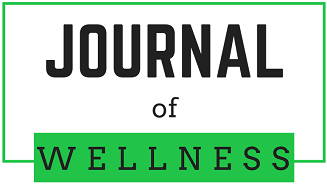
Abstract
Introduction
Wellness and the concept of holism have rich histories throughout the helping professions. However, Westernized medical models often promote the concept of treatment rather than prevention, limiting the helper’s ability to focus on wellness when working with clients/patients. Therefore, in order to support a re-integration to holistic wellness and the prevention of illness, and re-focus on a wellness ideology, we conducted a thorough theoretical overview of wellness in the helping professions to: (a) provide a historical overview of wellness in helping professions, (b) discuss prominent wellness models, (c) review wellness assessments, (d) present wellness supervision models, and (e) offer implications for helping professionals, helping educators, and helping-professionals-in-training (HPITs) who would like to implement or re-integrate wellness techniques across occupational and personal realms.
Discussion
The history of healthcare is rich with wellness undertones and holistic foundations for practice. However, the helping professions have been shifting away from traditional wellness ideologies with the emphasis on current healthcare trends and the philosophical struggle of balancing both wellness tenets and a popular medical model for practice. Following a thorough discussion of historical implications of wellness, wellness models, wellness assessments, and wellness supervision, implications for a re-integration of a wellness ideology are highlighted for (a) helping professionals, (b) healthcare educators, and (c) HPITs.
In regard to practicing healthcare providers, helping professionals are only as helpful as they are well. We suggest that helping professionals refocus their practice to include wellness and integrate such practices into their daily routine to combat compassion fatigue and/or burnout (which are common occurrences among helpers). Wellness practices may include meditation; breathing exercises; reflection; journaling; and other avenues to reflect, respond, and re-center throughout the day to remain within their own window of tolerance, reducing potential for burnout. Helping professional educators, on the other hand, are tasked with training the next wave of helpers. As such, they are responsible for assessing personal levels of wellness in order to ensure they are modeling wellness-behaviors for their HPITs. Regarding healthcare training programs and curriculums, administrators may introduce wellness courses or infuse wellness throughout the life of the program/training experience so HPITs are learning about wellness education and how to implement it across diverse situations. Furthermore, consistent wellness infusion in curricula could promote wellness behaviors and practices beyond the training experience. Finally, HPITs (similar to practicing professionals and healthcare educators) are not insulated from the effects of unwellness. As such, HPITs are encouraged during their clinical experiences to assess their own wellness and partake in activities to increase their wellness awareness. HPITs can formally (see the section on wellness assessments) or informally assess (refer to the wellness models section) their current levels of functioning and learn of potential wellness discrepancies early on in their careers, which in turn can help mitigate negative effects of being a helper in the future.
Conclusion
With the influence of Westernized viewpoints and a medical model symptom-reduction focus, a re-orientation to wellness could benefit helpers. Furthermore, as helpers continue to face heavy caseloads, high stress environments, and increased propensity for burnout and related issues, increasing wellness and wellness awareness can serve as a protective factor against the deleterious effects of helping for both helpers and the individuals they serve. By reviewing the literature on wellness (e.g., models, assessments, supervision) in the helping professions and applying wellness perspectives in personal and professional endeavors, helping can once again be at the fore-front of wellness-based treatment, training, and living.
DOI
10.18297/jwellness/vol2/iss2/6
Recommended Citation
Blount, Ashley J.; Dillman Taylor, Dalena L.; and Lambie, Glenn W.
(2020)
"Wellness in the Helping Professions: Historical Overview, Wellness Models, and Current Trends,"
Journal of Wellness: Vol. 2
:
Iss.
2
, Article 6.
DOI: https://doi.org/10.18297/jwellness/vol2/iss2/6
Available at:
https://ir.library.louisville.edu/jwellness/vol2/iss2/6
Title Page
Included in
Counselor Education Commons, Mental and Social Health Commons, Psychology Commons, Public Health Education and Promotion Commons, Social Work Commons
